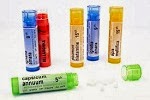Years of study and teaching has led me to condense my work in finding and assimilating a remedy into what I have termed the seven-fold elements, or the seven basilar elements of a remedy, the mastery of which is not very difficult. This gives a practical knowledge of the remedy and makes it much easier for every day use.
These elements are:
1. What it is.
2. What it thinks.
3. What it does.
4. Its likes and dislikes, (1) general.
5. Its sensation, (2) Particular.
6. Its modalities.
7. Its tissues, (skin, nerve, glands, etc.).
Study this outline carefully, and you will observe that the second and third points are largely objective, to be obtained by carefully noting the manner in which the patient expresses his symptoms. He may throw himself into a chair in such a manner as to indicate that he never wants to move again, and tells his symptoms or answers your questions in such a sullen mood as to leave no room for doubt as to what he thinks and the manner in which he does things.
Let us now take a remedy and see how this will work. Choose anyone you desire, but for the sake of convenience let us study Aconite.
1. – What is it: (a) Physically it is usually a full plethoric habit, sedentary life, dark hair and eyes, rigid muscles. (b) Physically it is very anxious, excitable, and full of fear.
2. – What it thinks: It thinks of death which it fears. It is unsteady in its ideas; when attempting to think one thing another forces it out of the mind and supplants it, causing confusion. The thoughts are usually sad, apprehensive, solicitous.
3. – What it does: You will readily see from the mental condition already expressed that it does things hurriedly and yet accomplishes very little. As in thought, so in action, it jumps from one thing to another in a restless manner without completing anything. The same fearful anxiety is shown in its actions as in its thoughts.
4. – Its likes and dislikes: When sick the appetite is capricious with loathing of food predominating. Or there may be a ravenous appetite, with hunger soon after eating. It is inclined to loathe solid food. It has great thirst for cold water and beer, but the beer is apt to produce a sensation of heaviness in the stomach.
5. – Its sensations: (a) General: It is very sensitive. Its pains may be a numbness and tingling all over the body, or drawing, tearing pains here and there, alternating with hearty symptoms. Often the pains are as if bruised in different parts of the body. The most marked pains of a general nature are “very fine stinging, or stinging, burning pains in many parts, as if seated in the skin.” (b) Particular: This depends on the part or organ affected. Suppose we take the chest for example. Here we find a sensation of tightness, constriction, squeezing, pressing, oppression, or weight so severe at times that it prevents deep inspiration. They all have, practically, the same meaning and are found in acute inflammations. Then there are stitching pains with cough; every effort at coughing intensifies the stitching. Or take the head, for example, and we have confusion as if intoxicated, hence vertigo. “Headache in head, burning headache as if the brain were agitated by boiling water.” This in acute conditions. Fullness in the head, as if everything would come out at the forehead. Then there is squeezing, contracted pressing and stitch-like pain in acute diseases.
6. – Its modalities: It is predominantly worse in the evening, at night, in a warm room, when rising up in bed, and lying on the affected side. It is worse from cold, dry west or northwest winds, from exposure to cold, and chilling when sweating. It is predominantly better when sitting up in a chair, when walking in the open or fresh air, from moistening or washing the suffering parts and from lying on the back.
7. – Its tissues: Acute inflammations and swellings, characterized by great sensitiveness and burning or stitching pain, a jaundiced condition of the skin in acute attacks of hepatitis, swollen and inflamed mucous tissues in acute coryza or gonorrhoea, acute inflammation of glands with burning, swelling and great sensitiveness to touch and pressure.
It seems to me that, with these seven points constantly in view, the matter of a therapeutic diagnosis will become less difficult as we study and apply our knowledge. It is not imperative that the seven be prominent in every case, but using them as a working basis in study and prescribing, apparent difficulties may be simplified. In taking or examining a case at the bedside or in the office these seven points should be kept constantly in mind and serve as a basis in both physical and therapeutic diagnosis. – G. E. Dienst, in the Critique.

– G. E. Dienst, in the Critique,American Institute of Homoeopathy, 65th Session, 1910,